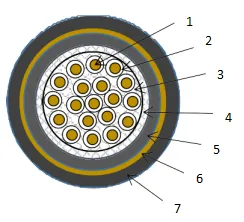Nov . 04, 2024 19:11 Back to list
Flanged Rubber Expansion Joints for Flexibility and Vibration Control Solutions
Understanding Rubber Expansion Joint Flange Types
Rubber expansion joints serve as crucial components in piping systems, designed to absorb vibration, accommodate movements caused by thermal expansion and contraction, and minimize noise transmission. Among the various designs of rubber expansion joints, the flange type has gained considerable recognition due to its versatility and robust performance across multiple industrial applications. This article delves into the features, benefits, and applications of rubber expansion joint flange types.
What is a Rubber Expansion Joint?
A rubber expansion joint is a flexible connector composed of rubber or elastomeric materials, designed to manage the stresses and strains that can occur in piping systems. These joints allow for axial movements, lateral movements, and angular deflections, which are crucial in maintaining the integrity of the pipe network. Commonly found in industries such as water treatment, power generation, HVAC, and manufacturing, these joints play a significant role in enhancing system durability.
Flange Type Rubber Expansion Joints
Flange type rubber expansion joints come with flanges on both ends, allowing for easy connection to pipes and other fittings. They are typically manufactured according to the standards of various flange types, such as ANSI, DIN, or JIS, ensuring compatibility with existing systems. The use of flanged connections simplifies the installation process, offering mechanical stability and ensuring a secure fit in high-pressure applications.
Key Features of Flange Type Rubber Expansion Joints
1. Flexibility Flange type rubber expansion joints significantly enhance the flexibility of a piping system. They can absorb thermal expansions and contractions, allowing for movement without causing stress on the pipe joints.
2. Damping Vibration These expansion joints effectively dampen vibrations caused by pumps and other equipment, reducing noise and prolonging the lifespan of connected components.
3. Chemical Resistance Made from specialized rubber compounds, flange-type joints are resistant to various chemicals, making them ideal for use in chemical processing industries.
rubber expansion joint flange type

5. Customization Manufacturers offer a wide range of sizes, shapes, and rubber compounds, allowing for bespoke solutions tailored to specific application needs.
Applications of Flange Type Rubber Expansion Joints
Flange type rubber expansion joints are widely used in various industries due to their enhanced performance characteristics. Some typical applications include
- Water and Wastewater Treatment These joints provide flexibility in piping systems dealing with different water pressures and temperatures, helping prevent leaks and maintaining efficiency.
- HVAC Systems In heating, ventilation, and air conditioning systems, flange type joints absorb vibrations and minimize noise, ensuring quiet operation and comfort.
- Chemical Processing The chemical resistance of rubber expansion joints makes them suitable for moving caustic or corrosive fluids in processing plants.
- Power Generation In power plants, these joints handle the thermal expansions from steam and other high-temperature fluids, ensuring efficient operation and system longevity.
Conclusion
Rubber expansion joint flange types are an essential component in modern piping systems, delivering flexibility, vibration dampening, and durability. Their ability to adapt to various pressures and temperatures, combined with chemical resistance, makes them suitable for a wide range of industrial applications. As industries continue to evolve, the demand for robust and efficient expansion joints will grow, further emphasizing the significance of flange type rubber expansion joints in enhancing the reliability of piping networks. By choosing the right expansion joint for specific applications, industries can ensure optimal performance and longevity of their systems.
Share
-
Reliable Wafer Type Butterfly Valves for Every IndustryNewsJul.25,2025
-
Reliable Flow Control Begins with the Right Ball Check ValveNewsJul.25,2025
-
Precision Flow Control Starts with Quality ValvesNewsJul.25,2025
-
Industrial Flow Control ReliabilityNewsJul.25,2025
-
Engineered for Efficiency Gate Valves That Power Industrial PerformanceNewsJul.25,2025
-
Empowering Infrastructure Through Quality ManufacturingNewsJul.25,2025